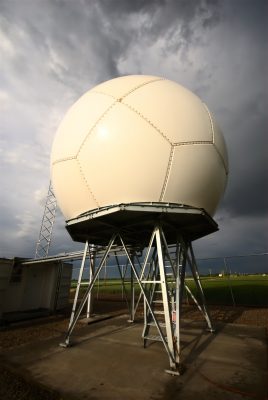Latest Version of Python ARM Radar Toolkit Released
Published: 12 May 2017

A new version of the Python ARM Radar Toolkit (Py-ART) is available.
Py-ART is an open-source software package that helps read, process, and visualize weather radar data. This is the ninth version of Py-ART since it became open source in 2013, meaning anyone can obtain the source code or propose a contribution to the module.
“That allows it to grow and adapt to the needs of the community,” says Scott Collis, Py-ART science lead and an ARM Climate Research Facility precipitation radar translator.
The new version of Py-ART (1.8.0) includes reading for ARM sonde files and improvements to the GAMIC file format reader. It also provides new capabilities for quantitative precipitation estimation (QPE) and determining the type of precipitation (rain, snow, etc.), as well as support for plotting radar data on maps using Cartopy geographic information system-based software.
Collis, a radar products lead at Argonne National Laboratory, says the scientific Python community is moving toward Cartopy.
“We’re trying to make sure that Py-ART relies upon well-supported software so that it is sustainable in the long term and, more importantly, interacts with other software packages,” Collis says.
Py-ART version 1.8.0 is the first edition to be compatible with Python 3.6, a recent update of the Python programming language.
The latest Py-ART version is also notable because it is the final release overseen by lead developer Jonathan Helmus. He left Argonne for a private industry position.
A history of Py-ART releases since February 2015 can be found on the GitHub website.
The ARM Climate Research Facility is a DOE Office of Science user facility. The ARM Facility is operated by nine DOE national laboratories.
Keep up with the Atmospheric Observer
Updates on ARM news, events, and opportunities delivered to your inbox
ARM User Profile
ARM welcomes users from all institutions and nations. A free ARM user account is needed to access ARM data.


















